By: John Krikorian
 Business Life Magazine once again asked a select group of our local officials whose leadership influence our region to discuss what they see from their vantage points to assess business today and what economic stimulus that can be generated here that is within their control. The outlook going into 2009 was that of economic upheaval on many fronts. We see that was on target. The financial crisis, the failing housing market and the impact to all sections that has lead our country into a recession with unemployment figures in Los Angeles County in October at 12.8%. How can it be good news, when the recent unemployment figures received show that the rate has edged down to only 10.0% in November. A new Rasmussen Report shows 67% of adults think the unemployment rate will be the same or higher a year from today. That includes 29% who believe the unemployment rate will be higher than it is now and 38% who expect it to stay about the same. Business Life Magazine once again asked a select group of our local officials whose leadership influence our region to discuss what they see from their vantage points to assess business today and what economic stimulus that can be generated here that is within their control. The outlook going into 2009 was that of economic upheaval on many fronts. We see that was on target. The financial crisis, the failing housing market and the impact to all sections that has lead our country into a recession with unemployment figures in Los Angeles County in October at 12.8%. How can it be good news, when the recent unemployment figures received show that the rate has edged down to only 10.0% in November. A new Rasmussen Report shows 67% of adults think the unemployment rate will be the same or higher a year from today. That includes 29% who believe the unemployment rate will be higher than it is now and 38% who expect it to stay about the same.
Too often, the impact of legislation on the state’s economic climate is overlooked during the legislative process. Some groups see increasing taxes as the panacea to the state’s problems, ignoring the larger problem of our declining state economy and staggering job losses. Consequently, California businesses are facing an increasingly hostile business climate – a climate that leaves many business leaders questioning the wisdom of doing business in California. One industry that is a perfect example is the Film Production industry, that is draining production out of state to such areas as Michigan and Connecticut to name a few. For some legislators, it seems more taxes are their answer to solving our economic woes.
Jack Kyser, senior vice president & Founding Economist, The Kyser Center for Economic Research, LAEDC, noted at a recent Economic Outlook 2010, sponsored by the Foothill Workforce Investment Board that there are major “Risks for the California Economy.” These he listed as • On-going state budget problems Impact on local governments & redevelopment agencies • Unfriendly business environment – business recruiters are busy (taking business out of state). • Water • Transportation, and
• Environmental Regulations.
The Challenge for 2010 will be in “Building Confidence” in the emerging dynamics that we are faced with. Let’s face it, our economy here in California, in the U.S. is in trouble. As a nation, and as individuals, we’ve out-spent our means and overextended our lives while saving less than ever before in our history. It is of importance to America that we renew our economic prosperity.
Its common knowledge (and often repeated) that small business drives job creation and supports the middle class in American and many other countries. It is also common knowledge that “Taxes Kill Jobs”. As small business goes, it seems, so go our national and international economies. The financial crisis, the credit crisis and the housing crisis have combined to make this a very tough time that goes beyond small business and that impacts our overall quality of life on many fronts.
2010 has numerous challenges that need to be prioritized with individual action plans with critical thinking, a broad perspective, problem-solving skills and leadership for success. Except for minor editing for clarity and brevity, the offerings that follow are the presentation of the writers.
 Los Angeles County Economic Los Angeles County Economic
Development Corporation
Kyser Center for Economic Research at the LAEDC
Jack Kyser
Founding Economist
A Slow Recovery Calls for Strategic Thinking
Our forecast for 2010 calls for a slow recovery for the Los Angeles County economy. Job losses should continue to mid-year, while the unemployment rate should move to over 13%. Businesses of all sizes will feel stressed, but there will be some good news during the year. The opening of the convention center hotel in downtown Los Angeles will bring in more business travelers to the area. A modest rebound is expected in international trade. Heavy construction will also benefit, with work at the ports of Los Angeles and Long Beach, at LAX, and on rail transit projects courtesy of Measure R. We also look for a modest recovery in single family home construction.
Local businesses need to be aware of the services offered by the LAEDC’s Business Assistance program. This includes getting through the permitting process, learning about incentive programs, accessing work force training, and even finding a new location. This assistance is free. Businesses also tell us that getting a loan is a significant concern, and we have a sizable roster of local lending programs on our web site.
The LAEDC will also be introducing a multi-faceted county-wide economic development strategy early in 2010. This should enable us to more effectively utilize our many assets, as well as fend off raids on our economic base by other states.
2010 will have many important non-economic events. One is the Census of Population, and we need to ensure a complete count. There is also the election of a new governor, and the health of the economy and the on-going state budget problem will generate much debate. Finally, the November 2010 general election will see a blizzard of initiatives that will require careful analysis to prevent possible damage to the overall economy or to key industries.
By year-end 2010 we will feel a little more confident, but it will take hard work to get there.
 Bob Hope Airport Bob Hope Airport
Dan Feger
Executive Director –
Bob Hope Airport will begin 2010 on the heels of a significant downturn in air travel over the previous year and a half, but signs that Airport patronage may pick up are beginning to appear.
The careful budgeting of the Airport Authority has allowed the facility to continue offering secure and efficient airport amenities and service to some 4.5 million travelers in 2009, and the Authority has been able to pursue projects that will enhance Airport sustainability over the long run.
A new $120 million Regional Intermodal Transportation Center (RITC) is at the head of the line for the New Year. The Authority will present a development review package to the City of Burbank for a consolidated rental car facility that will be integrated with a bus transit center directly across the street from the Bob Hope Airport Train Station where Amtrak and Metrolink trains make daily Airport stops. The RITC will convey passengers to and from the passenger terminal on an elevated covered moving sidewalk and will eliminate hundreds of thousands of daily automobile trips in the Airport vicinity over a year’s time.
The RITC will also host a Compressed Natural Gas (CNG) fueling station open to the general public, and the entire facility will maximize the use of solar power in its operation. The Authority hopes to start construction in 2011.
A major improvement in the terminal over the next two years will be a $6 million Common Use Passenger Processing System, bringing state-of-the-art digital infrastructure to the terminal that will greatly improve airline information availability, passenger ticketing and aircraft boarding.
Several high priority safety and security projects are also planned for 2010, including runway and taxiway improvements, as well as terminal and airfield surveillance equipment. The overall capital program budget amounts to $34 million.
The FAA denied the Airport’s application for a full nighttime curfew in 2009, following a nine-year study process. However, the Airport Authority will continue to seek meaningful nighttime noise relief in 2010, working with local jurisdictions and lawmakers to identify alternative measures to achieve this long-term objective. We will also continue the residential acoustical treatment program, which has now reached over 1600 dwellings.
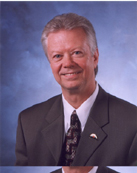 Economic Alliance of the Economic Alliance of the
San Fernando Valley
Bruce D. Ackerman
President and CEO
California has been known globally as the most innovative and entrepreneurial power for over 50 years. And the San Fernando Valley has traditionally been a “hotbed” of that activity during that same time. As we grapple with how to “grow our economy” out of the worst recession in recent memory, we face several challenges . . . and opportunities.
Today, the Valley continues to be a leader in innovation in various industry sectors. Most of this activity and economic power is due to the strength of the private sector in the development of new technologies, including life sciences, bio and nanotechnologies, aerospace, advanced manufacturing, travel and tourism, international trade, goods movement and logistics, digital arts and transformative media, agriculture, information technologies, or energy and environmental technologies. As we look forward to our economic future, these are our opportunities to grow and prosper.
To date, California is the leading state for technology development in one of the newest developing sectors – green technology. This innovative technology is being cited as the “next dot.com revolution” and has the potential to generate over 10 million new jobs in the next 10 years. In California alone, we could feasibly add more than 1 million of those new jobs!
Recently, The Valley Economic Alliance spearheaded a collaboration of green technology companies and organizations called “The Valley Green Team” that meets regularly to discuss innovative ways to implement the newest forms of effective energy conservation and development. And as exciting as these new opportunities may be, there is a great deal of cynicism and concern over the inability to figure out ways to tap into the ARRA funds coming out of the Federal government under the Stimulus program. It appears that all of the funds are being targeted to the public sector, and very little is being directed to the private section . . . where the jobs we need are actually being created.
The challenge still exists for our region to develop a focused strategy to bring the public sector, academia and the private sector together and work to maintain, mobilize, grow and expand infrastructure to accelerate California’s global comparative and competitive advantages, and capitalize on new opportunities. The Valley will truly be a part of this dynamic movement.
The challenge and the answer is a strong economic development plan. Continuing to develop collaboration that relies on the private sector stakeholders – such as businesses and non-profit organizations, those in the research sector – like universities, research centers, federal, state and local government stakeholders, and economic development corporations and agencies could very well bring a new stability and prosperity to our state. The opportunities exist and can be acted upon now and into the New Year.
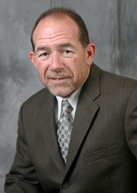 Alameda Corridor-East Alameda Corridor-East
Construction Authority
Tim Spohn
Chair, City Councilman,
City of Industry
Even with the recent recession, cargo container volumes at the Ports of Los Angeles and Long Beach, which handle more than 40% of the nation’s container trade, are expected to triple by 2035, straining Los Angeles County’s roads, freeways, railroads and ports. Trade growth, coupled with plans to improve rail facilities near the docks, will result in more frequent and longer trains crossing the San Gabriel Valley.
To cope with surging rail traffic, the Alameda Corridor-East Construction Authority (ACE) is responsible for constructing safety upgrades and grade separations (where the road goes over or under railroad tracks) in the San Gabriel Valley. Grade separations reduce emissions; eliminate train delays and the potential for deadly collisions at busy crossings. And, these significant and long-lasting infrastructure improvements help sustain the recovery of our region’s crucial construction and goods movement sectors.
With a program calling for 20 grade separation projects at the busiest crossings in the San Gabriel Valley, ACE has completed construction on the first five projects and construction is well underway or funded for the next five projects. The remaining 10 grade separation projects will be funded from 2006 state transportation bond funds, $400 million in Los Angeles County Metro Measure R sales tax funds to be programmed in early 2010 as well as federal and other funds, which are being sought.
In 2010, ACE looks forward to awarding a construction contract to build a roadway underpass and railroad bridge on Baldwin Avenue, a thoroughfare in the City of El Monte connecting two interstate highways. ACE has applied for federal recovery act discretionary funds to support the Baldwin Avenue project which will yield 1,370 full-time equivalent jobs – a much needed boost to the City of El Monte which is classified as a disadvantaged community because median income falls below 80% of statewide household income.
Also in 2010, ACE anticipates awarding a construction contract to construct a grade separation project on Nogales Street, immediately north of Interstate 60 in the City of Industry. The grade separation would relieve a bottleneck on Nogales Street, which carries nearly 50,000 vehicles a day, and the project would create an estimated 1,480 full-time equivalent jobs.
In 2011, ACE is scheduled to award a contract to construct a 2.1-mile train trench with bridges built at four street crossings in the City of San Gabriel. The San Gabriel Trench Grade Separation Project is in design and environmental study, and would create 8,964 full-time equivalent jobs.
ACE is continuing to work hard to improve mobility, increase safety, and improve air quality and foster economic vitality in the San Gabriel Valley. If you have questions, please visit the ACE website at www.theaceproject.org or call the ACE Helpline at (888) ACE-1426.
 Glendale Adventist Glendale Adventist
Medical Center
Morre Dean
President and CEO
I think we can all agree that 2009 has been tumultuous for our country and our world. Many have faced economic uncertainty and the health care industry specifically is facing new regulations that seek to change the way we do business. With all of that said, I look at Glendale Adventist Medical Center and am eager to see the bright promises held in 2010.
In reflecting over this last year, I see how God’s hand combined with hard work on the part of our employees and leaders, has brought us many of the successes we experienced in the last year.
At Glendale Adventist, we celebrated the opening of our new Ambulatory Surgery Center, one of the largest centers of its kind in the area.
In addition to opening the new center, Glendale Adventist began its next phase of expansion. This phase will include another patient care tower to mirror the West Tower opened in September 2007, as well as additional patient treatment areas and a new street to connect the East and West entrances of the hospital campus.
Thanks to our expansion efforts, the hospital has been able to care for more patients than ever. We take our promise to the community to provide Healthcare at a Higher Level very seriously. As part of that promise, we started a new weekly television and online show called Healthline. Through studio interviews and onsite segments, the show hosts, Gregory Zarian and Susanne Whatley work together to help the community understand their health and healthcare options. The show can be seen on Charter Cable 280 or online at GlendaleAdventist.com/healthline.
Glendale Adventist continues to celebrate its external recognitions including our strong leadership teams, sound organization and our commitment to improving operations. Whether that recognition comes in the form of an “A” bond rating achieved alongside our Adventist Health sister hospitals or more locally through the Glendale News Press as the best hospital in Glendale or the Los Angeles Business Journal as one of the best places to work in Los Angeles, we are proud to provide the best health resources for our community.
Glendale Adventist Medical Center is blessed by support from the community and treasures the opportunity to provide ongoing compassionate care by promoting healing and wellness for the whole person.
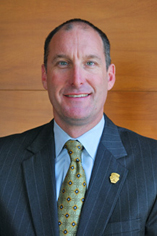 City of Burbank City of Burbank
Mike Flad
City Manager
Burbank remains strong and resilient moving forward to 2010. This past year, Burbank like several other cities was hit with many national retail closures like Mervyns, Circuit City and Linens ‘N’ Things as well as large businesses like Yahoo downsizing to cut costs. However, because of Burbank’s commitment to sustainability, infrastructure, competitive business incentives and maintaining the quality of life, Burbank was able to expand and grow in several areas as well. In 2009, several businesses emerged throughout Burbank such as Coach, Sketchers, Barney’s Beanery, Buffalo Wild Wings, TJ Maxx, and Henry’s Market. In addition, two Class A LEED Certified office developments opened in 2009 totaling 800,000 square feet of space. Burbank continues to remain “business forward” and provide the right economic incentives and technological advancements to bring in a great mix of tenants to Burbank. While the economy is still uncertain for some, Burbank has expanded both in the small and large business arena because of the core principles and values that remain unaltered.
Burbank is determined to take the next steps to forecast its own future and remain competitive.
With the launch of our new Economic Development Team in late 2009, Burbank has positioned itself to create new opportunities and remain proactive. Successful marketing campaigns such as our “Shop Burbank” program and our YUM YUM restaurant guide are part of what we’re doing to keep our existing businesses thriving. We recognize that fostering these partnerships and allowing our existing businesses to continue to grow is key to our strong business foundation.
With all of the accomplishments that we have seen in 2009 and the goals in place for 2010, we are confident that with continued commitment and pride from our local businesses and residents we will continue to take Burbank to the next level of excellence.
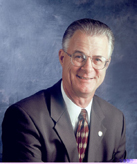
City of Glendale
Jim Starbird
City Manager
The economy has slowed new investments and revenue flow to most municipalities, but this has not stopped the City of Glendale from moving forward with revitalization efforts to fuel and drive future economic growth. New investment is taking place throughout the city in the form of business expansion as well as businesses attracted to Glendale’s location, public safety record and low cost business environment.
Economic development accomplishments in the city are numerous and vary in size and scope. A Trader Joe’s is scheduled to open in the Montrose Shopping Park by 2011, a new Subaru car dealership has joined the Brand Boulevard of Cars, and downtown Glendale could soon have its first museum in 106 years of history, the Museum of Neon Art.
Plans are also underway for an 11-story, 172-room Hyatt Place Hotel. Chipotle Mexican Grill and Panera Bread opened new locations respectively in September and July. AT&T Interactive announced that they will be adding dozens of new technology jobs at their Glendale Headquarters. My Shape, a major online women’s apparel firm recently relocated its headquarters to Glendale bringing over 70 employees downtown. In addition, global animation giant DreamWorks is in the midst of a major expansion adding 128,716 SF of office space to its existing facility, which will accommodate an additional 1,500 employees. For proposed development, Glendale is considering allowing discretionary approvals and plan checks on development projects that have full entitlement and are seeking financing.
On the retail front, the Glendale Galleria along with The Americana at Brand continues to help solidify the city as a regional center for shopping. With over 1.4 Million SF of retail space, the Galleria is one of Southern California’s premier regional malls attracting over 25 million visitors annually. The Americana at Brand successfully integrates retail, restaurant, cinema, and high-end residential uses in a series of mid-rise buildings located around three acres of public open space and pedestrian promenades. The development is helping to create the envisioned “18-hour downtown” with urban dwellers and patrons of cinemas, restaurants, and retails shops.
The Fairmont Avenue Extension is the largest transportation project in the history of Glendale Public Works. It involves construction of a bridge on Fairmont Avenue, which will extend Fairmont to the west over San Fernando Road, LA County’s railroad tracks and the Verdugo Wash, to join with the southerly extension of Flower Street to serve Glendale’s “Creative Corridor.” The project is scheduled for completion in August 2010.
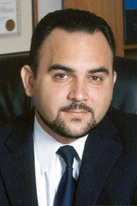
City of Monrovia
Scott Ochoa
City Manager
Job creation has always been an important component of economic development in Monrovia.
We feel strongly that bailing out businesses without creating or protecting jobs offers only a short-term solution to a long-term problem. While the need to increase municipal revenues from both sales and property taxes is urgent right now, it’s jobs and jobs alone that will ultimately bring the economy back to a stable, sustainable rate of growth and municipal budgets back to sufficient levels.
Monrovia’s redevelopment programs have created thousands of jobs over nearly four decades and our Redevelopment Agency and Department of Community Development, working closely with our community and regional partners, continue to seek out and pursue new businesses with both short-term advantages and long-term job development potential.
A major focus at this point is a proposed maintenance and operations yard for the Gold Line light rail extension. If that materializes in Monrovia, along with the Gold Line system itself, it means hundreds of construction jobs right off the bat, with hundreds more down the line as the yard begins operations.
Along the same stretch of future Gold Line track, Monrovia has planned for mixed-use housing and office/hospitality developments that will add hundreds more well-paying jobs and close-in homes for a growing workforce. Construction of the rail line beginning next year could well set that major project in motion, too.
As our businesses have suffered in this recession, the City of Monrovia has thrown all the resources it can afford at opening up opportunities – from development incentives to broker receptions, from aggressive one-on-one marketing to Shop Monrovia campaigns.
Our businesses are hanging on with our help, and we’re adding more new ones to the mix all the time: Where Mervyn’s and Expo are now gone, we have brought in Kohl’s and Living Spaces and Paul’s TV and Henry’s Market and Merengue Café and we’re soon to see the opening of a new Walgreen’s, the TPhillips and London pubs, Jersey Mike’s Subs and Surku Japanese Grill…all bringing jobs to our community and contributing to a more stable and prosperous future.
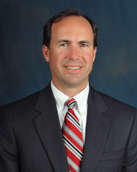
City of Pasadena
Michael J. Beck
City Manager
Pasadena, like every other city in Southern California and throughout the nation, is experiencing the impacts of a slow economy, but fortunately there are many positive indicators showing recovery.
Thanks to sound fiscal management, conservative budgeting practices and a diverse local economy, we have not seen the high degree of economic instability that some other cities are facing.
To regain the city’s strong fiscal footing, departments have instituted strategic cost control measures, prioritized delivery of services to meet the city council’s primary policy directives, and eliminated many vacant positions and all but the most necessary expenditures.
In addition to closely examining alternatives to cuts in city services and layoffs of municipal employees, we are strengthening relationships with the business community, the success of which is crucial to Pasadena’s economic health and quality of life.
Taking advantage of significant events at the Rose Bowl and throughout the City, Pasadena retailers have expressed optimism over the last few months, as the economic freefall seems to be subsiding. Major institutions such as Caltech and Kaiser Permanente are also seeing some stability. Office vacancy rates in Pasadena are higher compared to previous years but demand is still strong and growing.
City-sponsored outreach efforts are in full swing, with free monthly survival workshops for small businesses, quarterly breakfasts with industry groups, meetings with individual business owners, communication and advocacy with business districts, Pasadena Enterprise Zone incentives and activities, and more.
A new “Buy Local Pasadena” campaign is geared toward residents, workers and visitors with the intention of helping everyone understand that money spent locally keeps people employed, pours money back into the local economy and funds public safety programs.
Careful management, strategic planning and partnerships with the business community are leading Pasadena back on the path of sustainable prosperity.
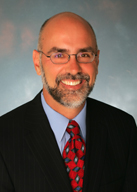
City of Santa Clarita
Ken Pulskamp
City Manager
The City of Santa Clarita, named Most Business-Friendly City in Los Angeles County for 2009, continues to be a first choice destination for business. One of the fastest growing communities in southern California, Santa Clarita has over 180,000 residents and nearly 7,000 businesses. Located 30 miles north of Los Angeles, the City has been named by Money Magazine as the best place to live in California for cities with populations over 100,000.
Santa Clarita assesses fewer taxes than other cities in Los Angeles County. The City does not have a business license fee, nor does it assess a utility user tax, resulting in significant savings to Santa Clarita businesses. In addition, the City is one of the State of California’s newest Enterprise Zones, offering valuable incentives to local businesses for the next 15 years. Ninety-seven percent of all commercially zoned land in Santa Clarita is located within the Enterprise Zone.
Already considered one of the safest cities in California, the City and its Sheriff’s Department formed the Santa Clarita Business Alliance, providing City-based businesses with their own Sheriff’s Sergeant to liaison with business owners and educate them on safe business practices. The City has also expedited plan submittal and permitting processes that can save businesses time and money.
The California Association for Local Economic Development recognized the Santa Clarita Film Office for its outstanding and innovative approach to filming. Catering to a demanding, budget-minded, and face-paced industry, the City’s Film Office has made Santa Clarita one of the most film-friendly areas in Southern California. This year, the Film Office’s new incentive programs make it even more attractive to film Santa Clarita.
Santa Clarita has a median income of $94,300. The Santa Clarita Valley boasts the state’s most coveted golf courses, charming wine lounges, destination dining, live music, and rich historic sites.
Imagine – Los Angeles without the headache of bumper-to-bumper traffic. Add rolling hills, parks, a picturesque lake, and a young community with endless opportunities for adventure… then you are in Santa Clarita!

|